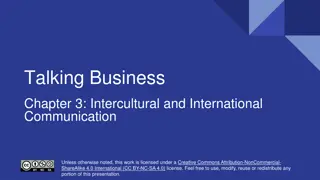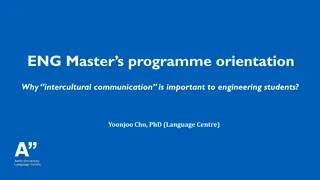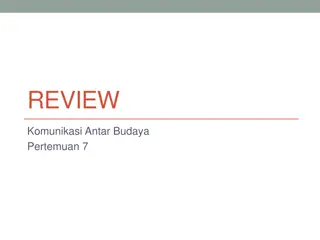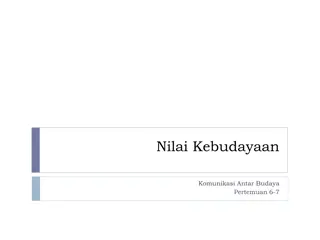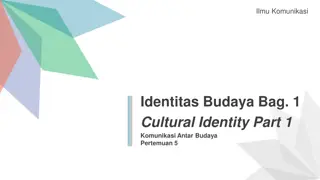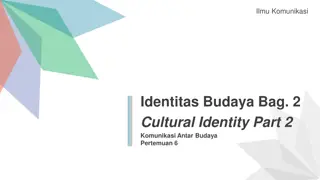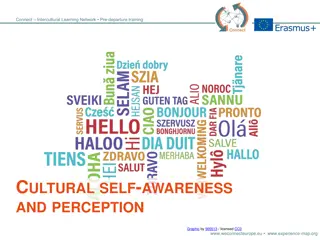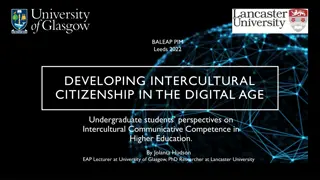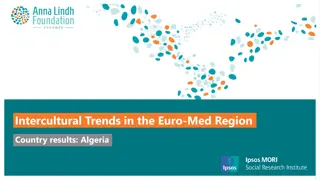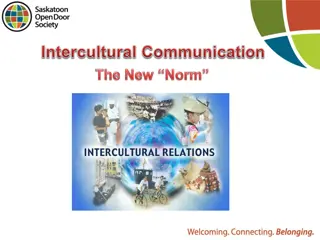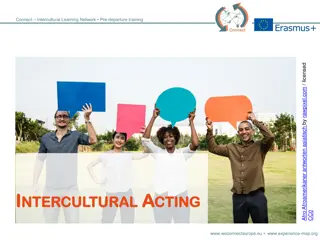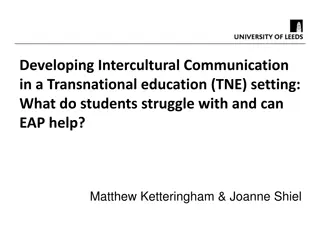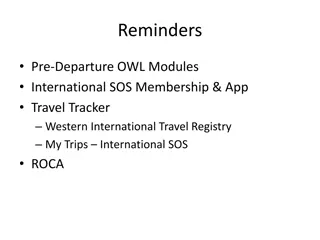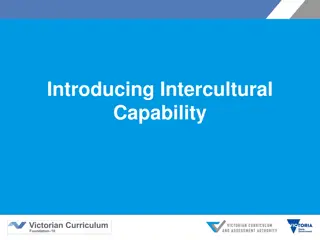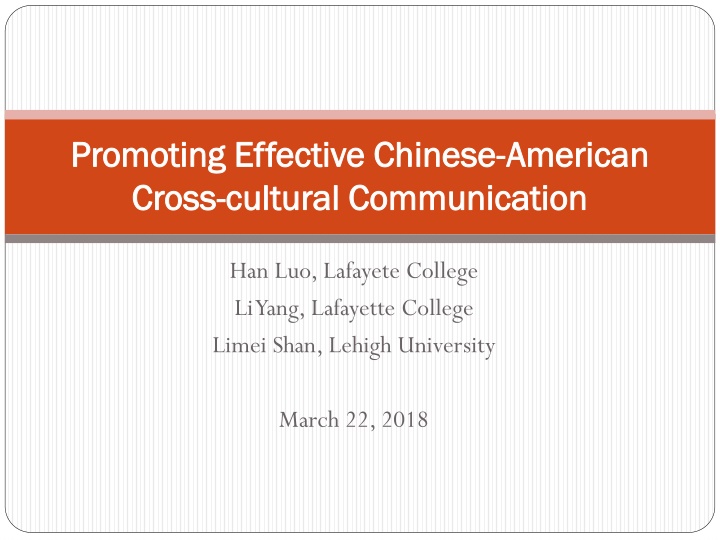
Enhancing Cross-Cultural Communication through Online Exchange Program
Learn how a Chinese-American online cross-cultural exchange program bridges the gap between American learners of Chinese and Chinese learners of English, fostering intercultural competence through in-depth discussions on various cultural themes. Explore project design stages and sample cultural questions for college life.
Download Presentation

Please find below an Image/Link to download the presentation.
The content on the website is provided AS IS for your information and personal use only. It may not be sold, licensed, or shared on other websites without obtaining consent from the author. If you encounter any issues during the download, it is possible that the publisher has removed the file from their server.
You are allowed to download the files provided on this website for personal or commercial use, subject to the condition that they are used lawfully. All files are the property of their respective owners.
The content on the website is provided AS IS for your information and personal use only. It may not be sold, licensed, or shared on other websites without obtaining consent from the author.
E N D
Presentation Transcript
Promoting Effective Chinese Promoting Effective Chinese- -American Cross Cross- -cultural Communication cultural Communication American Han Luo, Lafayete College Li Yang, Lafayette College Limei Shan, Lehigh University March 22, 2018
Background Typically, U.S. college-level students learn Chinese as a foreign language through classroom instruction. Thus, most of them do not have extensive direct contact with native speakers. Many scholars advocate online, distance exchange as an ideal environment for enhancing foreign language learning, especially intercultural understanding because it provides convenient, authentic, direct, and speedy access to native speakers and their cultures (Kramsch and Thorne, 2002, p. 100).
Goal This program aims to connect American learners of Chinese in the U.S. and Chinese of learners of English in China through Internet and Technology. Classroom instruction typically focuses on linguistic skills; this program complements classroom instruction by incorporating the cultural component of language learning. The ultimate goal is to develop students intercultural competence.
Project Design (1) This online cross-cultural exchange program is modeled on Cultura, an online cultural exchange project initiated by MIT. A Chinese-American Website was created to serve as the online discussion forum: https://lafchn.wordpress.com/ Each week, students are invited to focus on one theme that is of cultural depth such as college life, family, marriage and love, and so on. The question is: How should we guide students to engage in in-depth discussions of cultural differences for each theme?
Project Design (2) For each topic, the instructors design a list of cultural questions for the students from both sides to answer in their native languages. The instructors then compile answers from both sides and post them on the Chinese-American website. Students are invited to analyze the answers and discuss the reasons behind the differences/similarities. When the answers from the two sides are different, it can stimulate in- depth and interesting discussions.
Project Design (3) Sample Cultural Questions for College Life Word association Please write down three or four words you associated with the following. They can be nouns, adjectives or verbs. 1. College life Sentence completion Please finish the following sentences with the first three or four things that come to your mind. 1. A good college student is someone who... Reaction to situations Please state the first thing that you would think, say or do in the following (hypothetical) situations. 1. You are at a party and you see one of your friends getting very drunk. Short answer Please write down the short answer to the questions 1. What do you remember most about your college life (or activities)? List 3
A Brief view of the WordpressWebsite: https://lafchn.wordpress.com/
Limitations of Stage 1 The wordpress.com website loaded very slowly in China Reduced participation from the China side No thread for each topic (earlier postings buried at the bottom) No up-to-date topics? Just discussion, no final collaborative tasks
Improved Design in Stage 2 The Canvas Website created by Farah Vallera https://canvas.instructure.com/courses/1144070 Three-stage design Information exchange tasks Comparison and analysis tasks Collaborative tasks More interesting, up-to-date topics Associate three to five words with Trump Trump is How would you react if Trump were coming to your school to give a talk?
A Brief View of the Canvas Website : https://canvas.instructure.com/courses/1144070
Limitations of Stage 2 Lack of real and in-depth dialogue Avoidance: I am very careful not to offend my Chinese partner during our Skype conversations. I try to be polite and try not to touch upon dangerous topics. No deliberate risks The issue of motivation (extra workload) Chinese is already hard enough and the Chinese-American program definitely gives me quite some extra work.
Improved Design of Stage 3 Focus on sensitive topics and encourage deliberate risks Let the students to propose topics that they always want to discuss, but dare not talk about, that they think would offend the other culture. As a Chinese, I think Americans are often rather fake. Is being fake a norm in America? Recently, President Xi Jingping changed the Chinese constitution. What are your opinions on this?
Assessment Transcripts of online discussion End-of-semester reflection journal End-of-semester questionnaire and interviews Side-effect: The 2017 CLTA Action Research Award
Student Learning Outcomes Cultural gains Linguistic gains Intercultural communication competence (knowledge, attitudes, skills) Motivation Supportive Chinese learning community
Challenges Institutional/social Time difference Semester does not start at the same time Class size Incorporation into syllabus Political censorship Technological Technology Access Wordpress.com Climb over the wall Pedagogical Task design: discussion vs collaborative final product The role of the instructor: in-class discussion or not Participation & lack of real in-depth dialogues Other modes of communication?: Skype, WeChat, email, ... Financial ?

